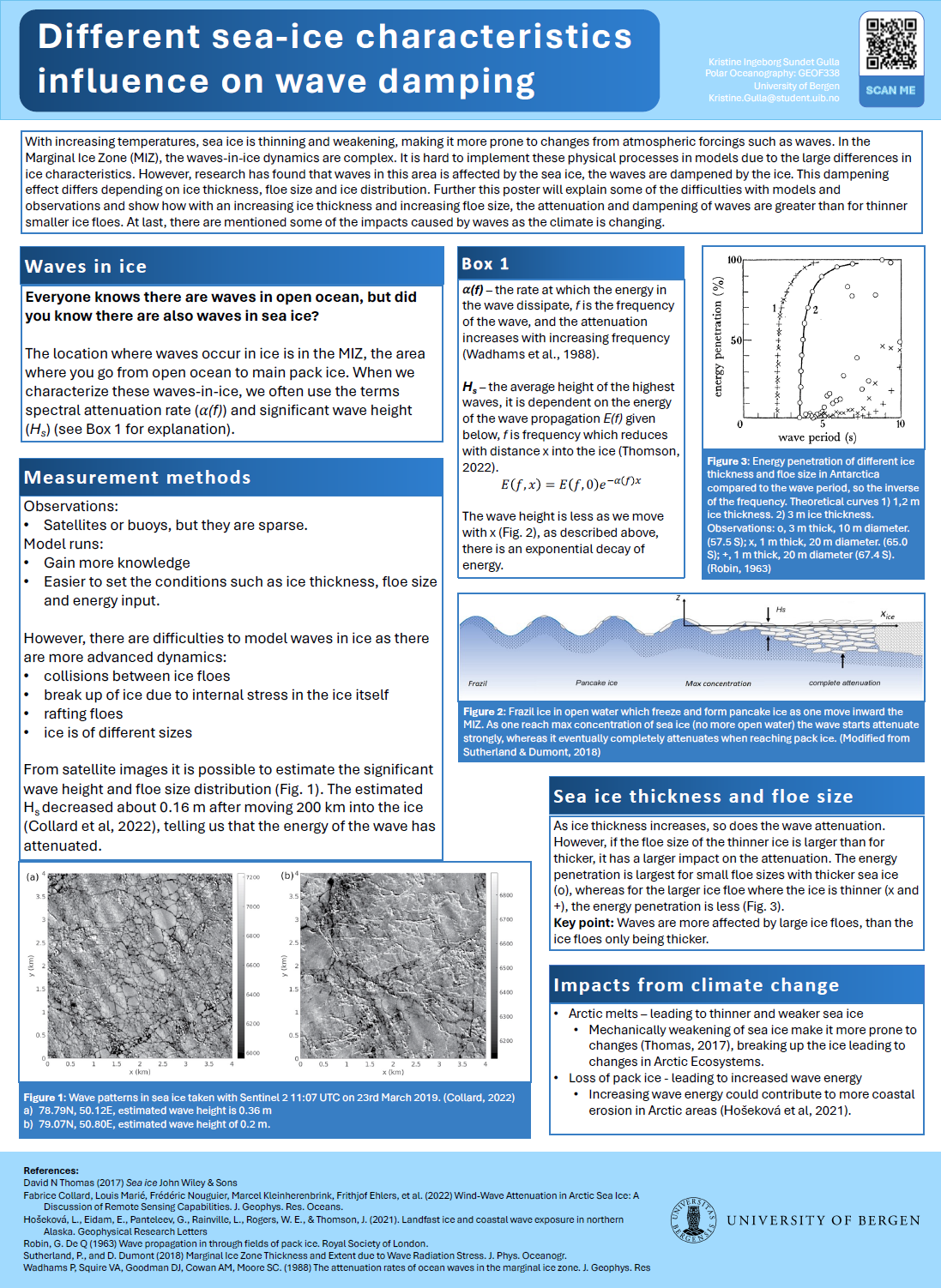Abstract
Due to increasing temperatures, the sea ice is thinning and weakening in the Arctic. This makes sea ice more prone to changes from atmospheric forcings such as wind and waves. In the Marginal Ice Zone (MIZ) there are many processes occurring, and one of them are waves-in-ice dynamics. Researchers are trying to implement these processes in coupled ice-ocean models, but due to large differences in types of ice and ice thickness it is hard to find a good model accounting for every physical process.
The poster will review how ice thickness and floe size influences waves when the waves are dampened by the ice. It is hard to directly measure the specific influence of ice thickness and floe size in the MIZ due to the large differences in ice characteristics over small areas, difficult access and rapid changes. Therefore most data are collected in land-fast ice, however some research has been done directly in the MIZ based upon visual estimates. It is clear that increasing ice thickness and floe size attenuate and dampen waves to a greater extent than thinner ice. This could have impacts on the Arctic ecosystems, specifically due to an increasing MIZ when the sea ice is thinner, so waves can travel further and open areas which have been closed and protected by sea ice.


